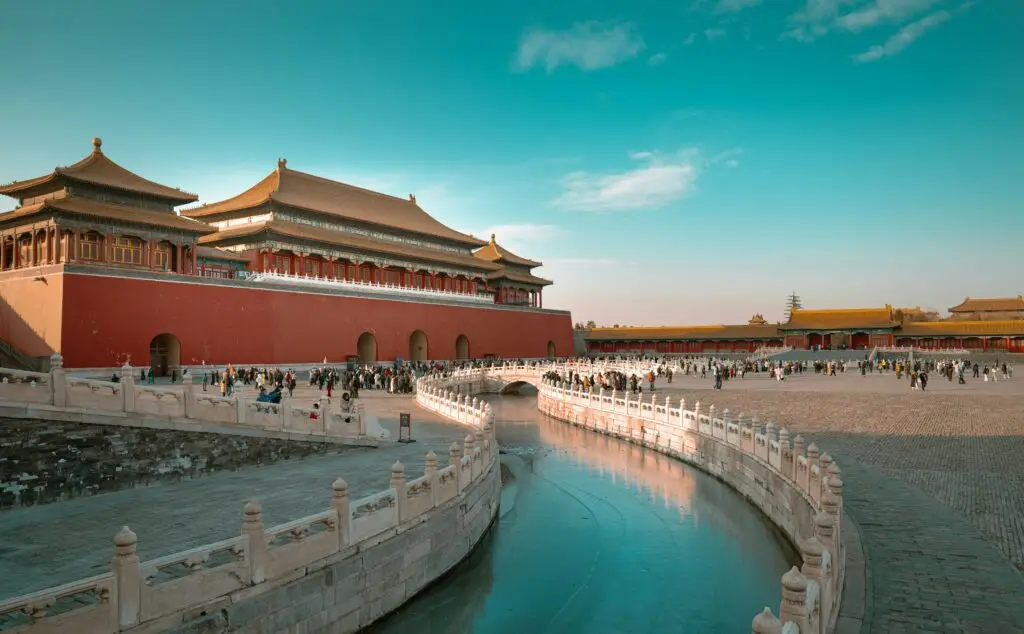Dunhuang, in the far west of Gansu Province, is a place where the past feels startlingly present. The moment you arrive, the dry desert air and the wide, open sky hint that this is not just another tourist destination—it’s a living fragment of history. For centuries, Dunhuang stood as a vital gateway on the ancient Silk Road, the route that connected China with Central Asia, the Middle East, and Europe. Merchants, monks, and explorers passed through its gates, bringing silk, spices, glassware, and ideas.
Today, the city is best known for its Mogao Caves, a UNESCO World Heritage Site that preserves some of the finest Buddhist art in the world. Carved into a cliff between the 4th and 14th centuries, these 735 caves contain vivid murals, sculptures, and manuscripts that reveal how cultures blended here. Inside, the air is still and cool, carrying the faint scent of earth and ancient pigments. The colors—lapis blues, golds, and deep reds—have survived for over a thousand years thanks to the dry climate. Standing before them, I felt both awe and humility, knowing that the hands that painted these walls lived in a world where the Silk Road was still busy with caravans and pilgrims.
Beyond its cultural treasures, Dunhuang is also shaped by its desert surroundings. Just a short distance from the city lies the Mingsha (Singing) Sand Dunes and the shimmering Crescent Lake. The dunes are massive, rising like golden waves under the sun. Climbing to the top is a test of endurance—the sand shifts under every step—but the reward is a breathtaking view of the desert stretching endlessly in all directions. The sound that gives the dunes their name—a soft humming or booming when the sand moves—is surreal, almost like the desert is speaking.
At the base of the dunes, Crescent Lake appears like a mirage. Its jade-colored water has somehow endured for centuries despite being surrounded by arid sands. Sitting on the ridge at sunset, watching camel caravans cross below, I couldn’t help but imagine the countless travelers who must have felt the same mixture of exhaustion, relief, and wonder.
Dunhuang’s evenings offer a completely different atmosphere. The night market glows under warm yellow lights, buzzing with the smells of cumin, roasting lamb, and fresh noodles. It’s here that I tasted some of my favorite dishes in Gansu—crispy-bottomed shengjian bao, fragrant lamb skewers, and bowls of hand-pulled noodles rich with local spices. Unlike the solemn caves or the vast dunes, the market feels intimate and lively, a reminder that Dunhuang is still a city where people live, work, and share their traditions.
Practical Tips for Visiting Dunhuang
When to Go: May to October offers the most pleasant weather. Summers are hot during the day but cooler at night; winters are extremely cold but less crowded.
Getting There: Dunhuang has an airport with flights from major Chinese cities, and train connections via Lanzhou or Xi’an.
Mogao Caves Tickets: Book well in advance, especially in peak season. Only a limited number of caves are open daily to protect the artwork.
Language: Outside major tourist attractions, English is rare—carry a translation app.
Desert Safety: Wear layers, bring water, and protect yourself from sun exposure. Even on cool days, the dry climate dehydrates quickly.
Why Dunhuang Stays With You
Dunhuang isn’t just about seeing famous landmarks—it’s about feeling the layers of history, art, and nature merge into one. The Mogao Caves show humanity’s capacity for devotion and creativity; the Singing Sand Dunes remind you of nature’s power and beauty; the night market makes you part of a living tradition.
This city doesn’t shout its story—it lets the desert winds carry it to you, softly, until you realize you’ve been listening all along.

